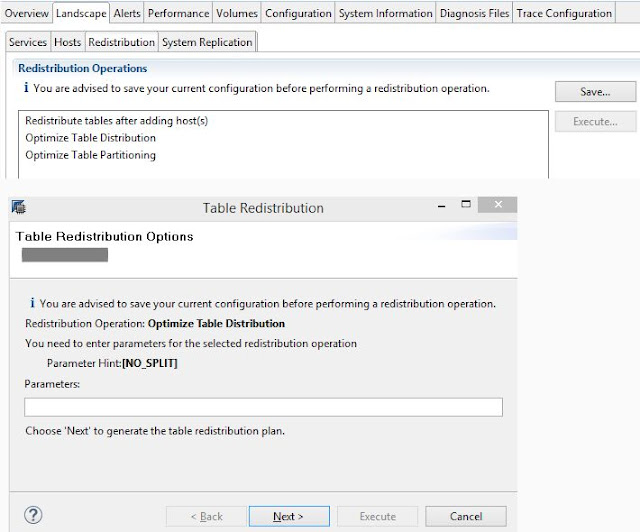SAP HANA exploits partitioning in SAP BW for optimization
Partitioning significantly improves query performance, based
on the types of queries and on your hardware configuration as the system will
find faster the requested information, because it will filter out all the
irrelevant partitions and thus reduce the data volume to be read.
This is a standard feature in most databases but SAP did not
truly exploit this feature being database agnostic until HANA. In SAP/R3, SAP
provided partition keys for BW but did not partition data during installation. With
HANA the table partitioning/distribution is automated for SAP NetWeaver
Business Warehouse.
Database tables created for InfoCubes or classic DataStore
objects are partitioned on the database. While the technical partitioning of
data at database level helps optimizing the runtime of BW processes to a great
extent, they alone are inadequate in building and maintaining data warehouses
that scale easily with growing data volumes. Hence, to address some of the
aspects of dealing with big data in BW systems, SAP recommends to partition
InfoProviders semantically.
1. InfoCube: The fact table of an InfoCube is split into 4
database partitions: uncompressed requests, compressed requests, reference
points, and historic movements – the later 2 are only relevant for InfoCubes
with inventory keyfigures and are otherwise empty.
2. DSO: A DSO is partitioned on the database using a time
characteristic – this is modeled in BW.
3. PSA tables: As part of the “BW post migration procedure” a
new PSA version (and therefore a new table) is created. The new PSA tables are
automatically partitioned based on the technical field PARTNO and new
partitions are created automatically once one partition exceeds a certain size
so avoiding the 2 billion limit. A PSA table MUST not be larger than 2 billion
records before the DB migration to HANA.
4. Masterdata tables: As part of the data quality and
referential integrity check in BW a unique integer value is created for each
characteristic value, the “SID”.The Masterdata tables are then automatically
partitioned to avoid hitting the 2 billion limit per part/table).
SAP is also working on tools to help you automate the
partitioning and merge tasks for SAP BW. You might have a look on the SAP HANA
Data Warehousing Foundation, which includes a tool called Data Distribution
Optimizer (DDO). It supports you during:
1. Scale-Out landscape analysis
2. Creation and modification of the TABLE_PLACEMENT table
3. Generating, simulating and executing redistribution plans
4. Comparing different redistribution plans
5. Analyze Log files of executed redistribution jobs
For HANA, refer to SAP Notes
1908075 - BW on SAP HANA: Table placement and
landscape redistribution
2143736 - FAQ: SAP HANA Table Distribution for BW
2081591 - FAQ: SAP HANA Table Distribution


Comments
Post a Comment